BORDERLINE PERSONALITY DISORDER (BPD)
Table of Contents
What is a Borderline personality disorder (BPD)?
Borderline personality disorder (BPD) is a mental illness that is part of the group of mental illnesses called personality disorders. Like other personality disorders, it is characterized by a consistent pattern of thinking, feeling, and interacting with others and with the world that tends to result in significant problems for the sufferer.
Specifically, BPD is associated with a pattern of unstable ways of seeing oneself, feeling, behaving, and relating to other people that markedly interferes with the individual’s ability to function. Also, as with other personality disorders, the person is usually an adolescent or adult before they can be assessed as meeting full symptom criteria for BPD.
Signs and Symptoms of Borderline personality disorder:
Borderline personality disorder (BPD) manifests in many different ways, but for the purposes of diagnosis, mental health professionals group the symptoms into nine major categories. In order to be diagnosed with BPD, you must show signs of at least five of these symptoms. Furthermore, the symptoms must be long-standing (usually beginning in adolescence) and impact many areas of your life.
The 9 symptoms of BPD
1 Fear of abandonment: People with BPD are often terrified of being abandoned or left alone. Even something as innocuous as a loved one arriving home late from work or going away for the weekend may trigger intense fear. This can prompt frantic efforts to keep the other person close. You may beg, cling, start fights, track your loved one’s movements, or even physically block the person from leaving. Unfortunately, this behavior tends to have the opposite effect—driving others away.
2 Unstable relationships: People with BPD tend to have relationships that are intense and short-lived. You may fall in love quickly, believing that each new person is the one who will make you feel whole, only to be quickly disappointed. Your relationships either seem perfect or horrible, without any middle ground. Your lovers, friends, or family members may feel like they have emotional whiplash as a result of your rapid swings from idealization to devaluation, anger, and hate.
3 Unclear or shifting self-image: When you have BPD, your sense of self is typically unstable. Sometimes you may feel good about yourself, but other times you hate yourself, or even view yourself as evil. You probably don’t have a clear idea of who you are or what you want in life. As a result, you may frequently change jobs, friends, lovers, religion, values, goals, or even sexual identity.
4 Impulsive, self-destructive behaviors: If you have BPD, you may engage in harmful, sensation-seeking behaviors, especially when you’re upset. You may impulsively spend money you can’t afford, binge eat, drive recklessly, shoplift, engage in risky sex, or overdo it with drugs or alcohol. These risky behaviors may help you feel better in the moment, but they hurt you and those around you over the long-term.
5 Self-harm: Suicidal behavior and deliberate self-harm is common in people with BPD. Suicidal behavior includes thinking about suicide, making suicidal gestures or threats, or actually carrying out a suicide attempt. Self-harm encompasses all other attempts to hurt yourself without suicidal intent. Common forms of self-harm include cutting and burning.
6 Extreme emotional swings: Unstable emotions and moods are common with BPD. One moment, you may feel happy, and the next, despondent. Little things that other people brush off can send you into an emotional tailspin. These mood swings are intense, but they tend to pass fairly quickly (unlike the emotional swings of depression or bipolar disorder), usually lasting just a few minutes or hours.
7 Chronic feelings of emptiness: People with BPD often talk about feeling empty, as if there’s a hole or a void inside them. At the extreme, you may feel as if you’re “nothing” or “nobody.” This feeling is uncomfortable, so you may try to fill the void with things like drugs, food, or sex. But nothing feels truly satisfying.
8 Explosive anger: If you have BPD, you may struggle with intense anger and a short temper. You may also have trouble controlling yourself once the fuse is lit—yelling, throwing things, or becoming completely consumed by rage. It’s important to note that this anger isn’t always directed outwards. You may spend a lot of time feeling angry at yourself.
9 Feeling suspicious or out of touch with reality: People with BPD often struggle with paranoia or suspicious thoughts about others’ motives. When under stress, you may even lose touch with reality—an experience known as dissociation. You may feel foggy, spaced out, or as if you’re outside your own body.
Causes of Borderline personality disorder (BPD):
Researchers are still trying to learn the exact cause of BPD. Multiple factors may contribute to the disorder, including genetics, environmental factors, and serotonin abnormalities.
Genetics :
BPD may be a genetic condition. A study on twins and BPD published in the Journal of Personality Disorders. Trusted Source suggests the disorder has a substantial genetic component.
Environmental factors :
Growing up in an unstable, abusive, or neglectful environment may raise your risk of developing BPD.
Serotonin abnormalities :
Serotonin is a hormone that helps regulate mood. Abnormalities in serotonin production may make you susceptible to BPD.
Risk Factors:
You may be at risk of developing BPD if:
- you have a family member with BPD
- you felt emotionally unstable or emotionally vulnerable as a child
- people in your household were impulsive when you were a child
- you were emotionally abused as a child
Complication:
Borderline personality disorder can damage many areas of your life. It can negatively affect intimate relationships, jobs, school, social
activities and self-image, resulting in:
- Repeated job changes or losses
- Not completing an education
- Multiple legal issues, such as jail time
- Conflict-filled relationships, marital stress or divorce
- Self-injury, such as cutting or burning, and frequent hospitalizations
- Involvement in abusive relationships
- Unplanned pregnancies, sexually transmitted infections, motor vehicle accidents and physical fights due to impulsive and risky behavior
- Attempted or completed suicide
In addition, you may have other mental health disorders, such as:
- Depression
- Alcohol or other substance misuse
- Anxiety disorders
- Eating disorders
- Bipolar disorder
- Post-traumatic stress disorder (PTSD)
- Attention-deficit/hyperactivity disorder (ADHD)
- Other personality disorders
Treatment of Borderline personality disorder (BPD):
Psychological treatments (talking therapies) are the best way to treat BPD. These treatments usually involve talking with a health professional one-to-one or sometimes attending special groups. Medication is not recommended as a person’s main treatment for BPD. For someone who is already receiving psychological treatment, medication may be helpful to manage particular symptoms. Electroconvulsive therapy (ECT) does not work for BPD.
Goals of treatment :
For many people with BPD, important goals are:
- to overcome emotional problems (such as depression, anxiety, and anger)
- to find more purpose in life (e.g. by making a positive contribution to their community)
- to build better relationships
- to learn how to understand and live with yourself
- to improve physical health.
Psychotherapy of Borderline personality disorder:
Psychotherapy — also called talk therapy — is a fundamental treatment approach for borderline personality disorder. Your therapist may adapt the type of therapy to best meet your needs. The goals of psychotherapy are to help you:
- Focus on your current ability to function
- Learn to manage emotions that feel uncomfortable
- Reduce your impulsiveness by helping you observe feelings rather than acting on them
- Work on improving relationships by being aware of your feelings and those of others
- Learn about borderline personality disorder
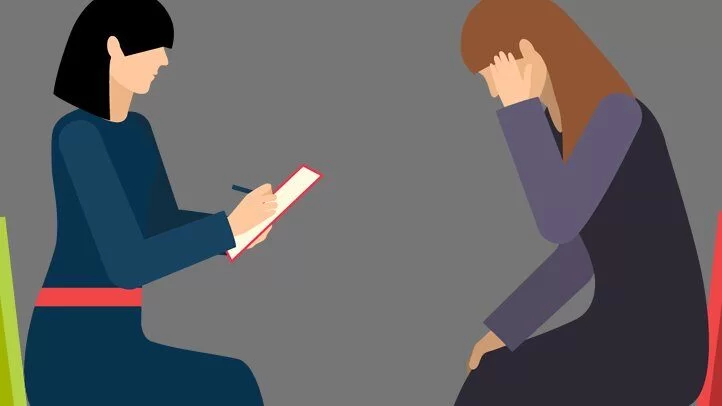
Types of psychotherapy that have been found to be effective include:
1) Dialectical behavior therapy (DBT) : DBT includes group and individual therapy designed specifically to treat borderline personality disorder. DBT uses a skills-based approach to teach you how to manage your emotions, tolerate distress and improve relationships.
2) Schema-focused therapy : Schema-focused therapy can be done individually or in a group. It can help you identify unmet needs that have led to negative life patterns, which at some time may have been helpful for survival, but as an adult are hurtful in many areas of your life. Therapy focuses on helping you get your needs met in a healthy manner to promote positive life patterns.
3) Mentalization-based therapy (MBT) : MBT is a type of talk therapy that helps you identify your own thoughts and feelings at any given moment and create an alternate perspective on the situation. MBT emphasizes thinking before reacting.
4) Systems training for emotional predictability and problem-solving (STEPPS): STEPPS is a 20-week treatment that involves working in groups that incorporate your family members, caregivers, friends or significant others into treatment. STEPPS is used in addition to other types of psychotherapy.
5) Transference-focused psychotherapy (TFP) : Also called psychodynamic psychotherapy, TFP aims to help you understand your emotions and interpersonal difficulties through the developing relationship between you and your therapist. You then apply these insights to ongoing situations.
6) Good psychiatric management: This treatment approach relies on case management, anchoring treatment in an expectation of work or school participation. It focuses on making sense of emotionally difficult moments by considering the interpersonal context for feelings. It may integrate medications, groups, family education, and individual therapy.
MEDICATION :
Although no drugs have been approved by the Food and Drug Administration specifically for the treatment of borderline personality disorder, certain medications may help with symptoms or co-occurring problems such as depression, impulsiveness, aggression or anxiety.
Medications may include antidepressants, antipsychotics or mood-stabilizing drugs.
Talk to your doctor about the benefits and side effects of medications.
Hospitalization
At times, you may need more-intense treatment in a psychiatric hospital or clinic. Hospitalization may also keep you safe from self-injury or address suicidal thoughts or behaviors.
RECOVERY TAKES TIME :
Learning to manage your emotions, thoughts, and behaviors takes time. Most people improve considerably, but you may always struggle with some symptoms of borderline personality disorder. You may experience times when your symptoms are better or worse. But treatment can improve your ability to function and help you feel better about yourself.
You have the best chance for success when you consult a mental health provider who has experience treating borderline personality disorder.
COPING AND SUPPORT :
Symptoms associated with borderline personality disorder can be stressful and challenging for you and those around you. You may be aware that your emotions, thoughts, and behaviors are self-destructive or damaging, yet you feel unable to manage them. In addition to getting professional treatment, you can help manage and cope with your condition if you:

- Learn about the disorder so that you understand its causes and treatments
- Learn to recognize what may trigger angry outbursts or impulsive behavior
- Seek professional help and stick to your treatment plan — attend all therapy sessions and take medications as directed
- Work with your mental health provider to develop a plan for what to do the next time a crisis occurs
- Get treatment for related problems, such as substance misuse
- Consider involving people close to you in your treatment to help them understand and support you
- Manage intense emotions by practicing coping skills, such as the use of breathing techniques and mindfulness meditation
- Set limits and boundaries for yourself and others by learning how to appropriately express emotions in a manner that doesn’t push others away or trigger abandonment or instability
- Don’t make assumptions about what people are feeling or thinking about you
- Reach out to others with the disorder to share insights and experiences
- Build a support system of people who can understand and respect you
- Keep up a healthy lifestyle, such as eating a healthy diet, being physically active, and engaging in social activities
- Don’t blame yourself for the disorder, but recognize your responsibility to get it treated
Physiotherapy Treatment of Borderline personality disorder:
A] Visual and Auditory Grounding Exercises :
Visual and auditory grounding exercises rely on using your senses of sight and hearing to ground you into the present moment. To conduct a visual grounding exercise, take a deep breath, and then start to mentally catalog the things you see around you. Look for even the mundane details like the color of electrical outlets or a frame that’s crooked.
To do an auditory grounding exercise, listen to the sounds you hear around you. Don’t just notice the obvious sounds, but notice the layers of sound, such as a dog’s whine before it howls. Notice how sounds rise and fall, their pitch, intensity, and timbre. The good news is that these exercises are suitable for any environment. In other words, you don’t need to be able to see or hear anything special to be able to practice them. In fact, these exercises can be particularly useful for times when you’re in public, as no one will even know what you are doing. You can then stop the exercise whenever you’re feeling reconnected to the current moment.
Other visual and auditory grounding exercises you can try include:

- Sing or hum your favorite song.
- Read your favorite poem, children’s book, or song lyrics out loud.
- Call someone.
- Whisper or say out loud, “I am safe,” or “I am calm,” or whatever emotion you are trying to capture. Repeat it until you feel grounded.
- Put on a funny YouTube video or watch an episode of your favorite sitcom. Or watch a scary movie.
- Find an app that plays nature sounds ahead of time. Pick your favorite one and play it when you need grounding.
B] Tactile Grounding Exercises :
Tactile grounding exercises use your sense of touch to ground you. One commonly used tactile grounding exercise is to grab an ice cube out of the freezer and hold it in your hand until it starts to cause some mild discomfort. Don’t hold onto it for too long or it can cause pain. Many people find that the discomfort helps them reconnect with the current time.
Here are some other examples of tactile grounding exercises to try:
- Take a cool shower or run your hands under cool water. Or do the opposite and take a hot bubble bath.
- Gently snap a rubber band on your wrist.
- Rub some scented lotion on your hands, focusing on the way it feels and smells as you work it into your skin.
- Use a water mister to spray your face and/or chest.
- Pick a hand and tap each finger with your thumb, starting with your index finger and continuing down. Go back and forth until you feel grounded.
- Keep a bead, pebble, stress ball, a small piece of cloth, or another object of your choice in your pocket and roll it around in your hand(s) when you need to get grounded. You can also use a bracelet or necklace.
- Run your hand slowly and gently over the carpet or the fabric of a piece of furniture or clothing and notice how it feels when you rub it in one direction versus the other.
- Put a piece of chocolate in your mouth. Experience the texture, flavor, and feel as it slowly melts.
- Stretch your arms up over your head as high as you can, then out to your sides, finally pulling your elbows back as far as you can behind your back. Repeat. Think about your muscles flexing and feel their strength.
- Hug your favorite stuffed animal, a comfy blanket, or a pillow.
- Take off your shoes and push your toes into the floor or ground.
C] Other Grounding Exercises :
If none of the above works for you, be creative and make up your own grounding exercises. Coming up with your own may be especially helpful since only you know what will work best for your situation. What senses are most powerful for you? Smell? Taste? Touch? Might a combination of exercises work best, like putting on your favorite song while you stretch your muscles?
Here are more techniques to try or that you can use as a springboard to come up with your own twist:
- Take a whiff of peppermint from a bottle of essential oil or very strong mints.
- Bite into a lemon or take a sip of lemon juice.
- Find something in the room that starts with A, then B, then C, and so on.
- Count backward from 100.
- Put on your favorite song and really concentrate on the words, the music, and the way it all makes you feel.
- Write how you’re feeling in a journal that’s designated for grounding and use your favorite pen. Notice how the pen feels in your hand and the smoothness of how it writes on the paper.
- Play a game on your phone or computer.
- Breathe in through your nose slowly and deeply until your lungs are full. Slowly exhale through your mouth until your lungs are empty.
- Repeat, concentrating on the feeling of your lungs expanding and contracting.
- Pull a mental picture into your mind of your favorite place and imagine you’re there. Think about what you’d be doing if you were really there.
- Go outside and smell the air or the flowers, trees, or leaves.
- Jump up and down.

D] Go Yoga :
Yoga is a low-impact way to get in the habit of moving and stretching your body. Yoga has the added benefit of lowering blood pressure, reducing anxiety, and helping with breathing and centering your mind and body. Yoga is so beneficial to your mental health that many +treatment centers for BPD, anxiety, and depression offer yoga as part of their recovery programs.
E] Walk It Off :
This seems obvious, doesn’t it? Walking is probably one of the safest and lowest impact exercises with the highest benefits, and you don’t need to belong to a gym to do it. The only thing you need, outside of your two feet, is a good pair of comfortable walking shoes. Walking will not only reduce your stress, but it will also lower your blood pressure and reduce your anxiety.

F] Just Keep Swimming :
Swimming is one of the most ideal low-impact exercises. The buoyancy of the water puts less stress on the body, bones, and joints, and the activity can increase your endurance and flexibility, as well as build muscles. Beyond that, swimming is a fun and relaxing way to move your body. Not to mention the fact that, often, where there is a swimming pool, there is a hot tub. Fostering a connection between mind and body paves a powerful road toward getting back in touch with your sense of self and can go a long way toward diminishing the symptoms of Borderline Personality Disorder, depression, and anxiety.

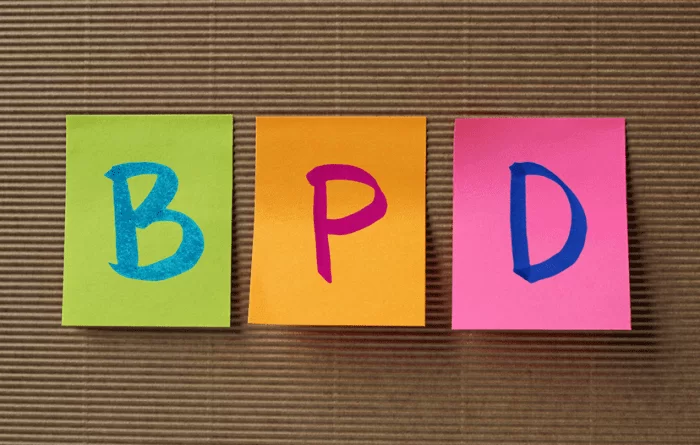
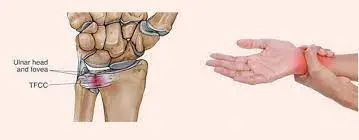
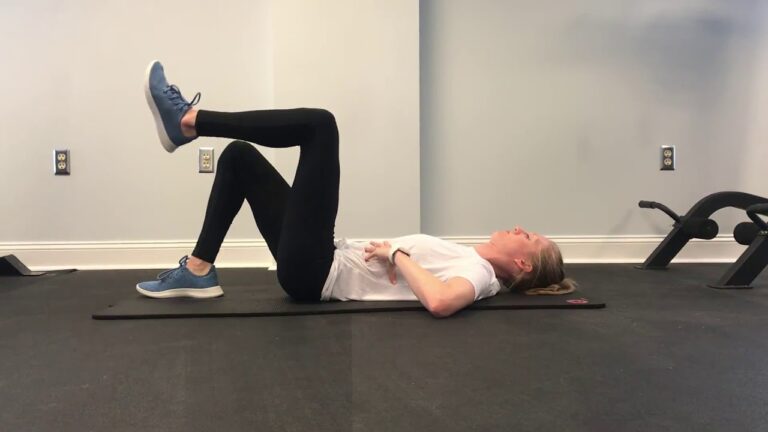


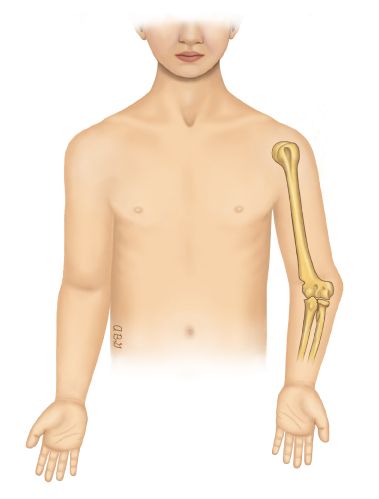
One Comment